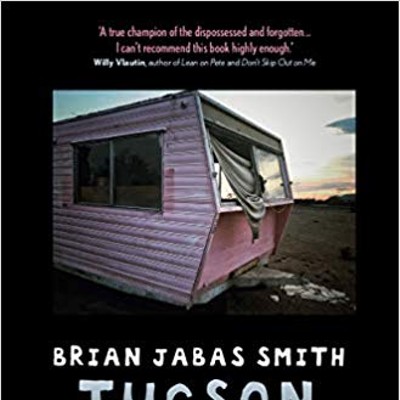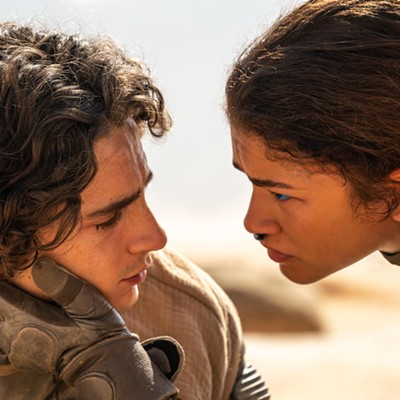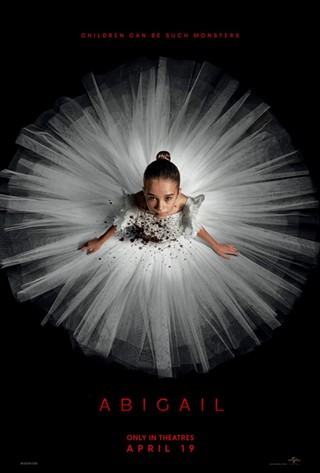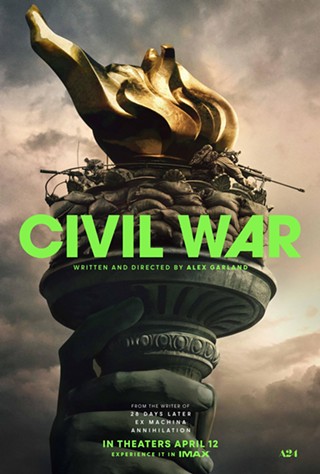Still, no matter what you call it, quad rugby is an exciting, high-speed sport that hasn't gotten a lot of attention. Perhaps this is because it's played by quadriplegics, whom we don't normally think of as top-notch athletes. After watching Murderball, though, it would be hard to maintain that position. This documentary covers two years in the lives of the United States quad rugby team, and it exposes a game that's as fast, brutal and strategically exciting as a running naked through western Afghanistan with "I'm the guy who peed on the Koran" stenciled across your ass. Quad rugby, for those who don't know (and that would include pretty much everyone who hasn't seen Murderball) is essentially rugby played by men in steel wheelchairs. And rugby, for those who don't know (and that would include pretty much every American who doesn't say "mate" or "billabong") is like football, only without all that sissy stuff like padding and helmets and health insurance.
Filmmakers Henry Alex Rubin and Dana Adam Shapiro, each of whom has at least three names, have produced one of the most compelling documentaries since Nanook of the North. It didn't hurt that their subjects are colorful, driven, hard men who have a history of hate, spite and emotional redemption.
The U.S. quad team was, for many years, the dominant team in international competition. One of their star players was Joe Soares, who was cut at the end of the 2002 season. Luckily, Joe is not the kind of person who takes a live-and-let-live attitude toward things like this. Nor, really, towards any sort of thing. After getting cut from the team, he took some time off to mentally abuse his family, and then accepted a position coaching the Canadian quad team. In modern political vernacular, this would mean that Joe hates America.
And his old teammates don't let him forget it, treating him like he was giving candy and missiles to al-Qaida. Mike Gililand, a Phoenix-born player, shouts at Soares, "How's it feel to betray your country?"
Soares shouts back, "I was born in Portugal." Thus, he's the great American success story: Come to America, lose the use of your legs, join the greatest quad rugby team in the world, and then head to Canada, which, technically, is in America.
Not seeing it that way is the U.S. team's star player, Mark Zupan, who looks and acts like an international sports hero with a spiked stick in his ass who just happens to be stuck in a wheelchair. He's joined in hating Soares by players like Arizona native Andy Cohn, an angel-faced all-around athlete who found that murderball was one of the few sports open to him after a spinal injury left him in a wheelchair. That wheelchair looks like something out of a 12-year-old Xbox fan's idea of a Roman gladiator's armor, and Cohn moves it at high, and dangerous, speeds around the quad rugby field, knocking over opponents and spreading good cheer.
Cohn, like other members of the team, also does outreach at hospitals, showing the recently handicapped that they don't have to give up things like violence, competition and getting laid.
Some of the best moments of Murderball occur in these off-court sessions where you see the players' human side, as well as their uniformly hot girlfriends who seem to live in bikinis. You also see the players' playful side: I don't want to give anything away, but let's just say there are some great gags you can pull if you're missing all your limbs and fit easily into a box.
Directors Rubin and Shapiro were certainly lucky to come upon such an inherently cinematic group of people, but they had more than luck on their side. Murderball is expertly shot, with a fast-paced, quick-cutting style for the actual games and a more open look in the off-court segments. Rubin and Shapiro were also smart enough to approach their story as a story, and they set it up so that the rivalry between Soares and the others is played out in two international championships. This gives Murderball an overall narrative structure, which is mirrored in the story of Soares coming to terms with his increasing age and inability to act effectively as a player.
The rich combination of humanity and brutality make Murderball the perfect summer-movie product. And yet, as they say at the State Department, it's all true! I wish more Hollywood screenwriters knew how to give film the kind of strong dramatic thrust that Murderball has. Or maybe it's best that they don't: Murderball could end up being the surprise hit of the summer, since it delivers all the excitement and interest that Scarlett Johansson Runs Away From Killer Robots While Superheroes Stare at Her Bosoms promises but fails to present.













